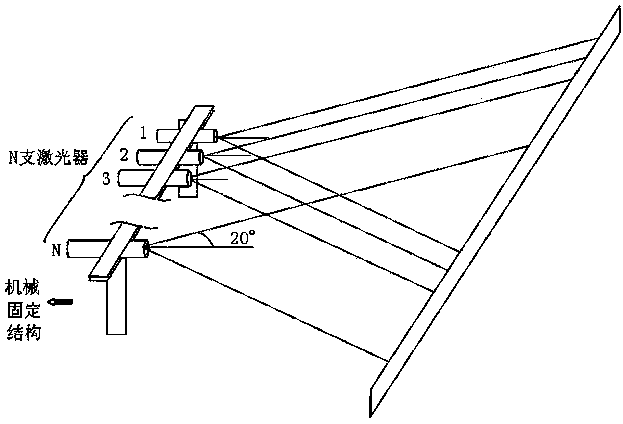Remote visual navigation method based on laser splicing
A navigation method and remote technology, applied in the field of visual navigation system
- Summary
- Abstract
- Description
- Claims
- Application Information
AI Technical Summary
Problems solved by technology
Method used
Image
Examples
Embodiment Construction
[0010] Such as figure 1 The schematic diagram of the principle of long-range visual navigation based on laser stitching is shown. First, the output spot of a single low-power laser is shaped into a rectangular spot with a required distance through a lens or lens group, and then two or more low-power lasers (with shaping The required lens or lens group) is fixed on the optical table, and through the adjustment of the optical table, the output spots of each laser are overlapped as much as possible, so as to achieve the effect that the light spot intensity distribution of high-power lasers is difficult to achieve. Such as figure 1 shown. The total laser power can be controlled by directly controlling the switch of the low-power laser, so that it can meet the purpose of navigation without causing damage to the human eye within a large distance range and satisfying the visibility of the human eye.
[0011] When only one laser is working at a very short distance, its output power ...
PUM
 Login to View More
Login to View More Abstract
Description
Claims
Application Information
 Login to View More
Login to View More - R&D
- Intellectual Property
- Life Sciences
- Materials
- Tech Scout
- Unparalleled Data Quality
- Higher Quality Content
- 60% Fewer Hallucinations
Browse by: Latest US Patents, China's latest patents, Technical Efficacy Thesaurus, Application Domain, Technology Topic, Popular Technical Reports.
© 2025 PatSnap. All rights reserved.Legal|Privacy policy|Modern Slavery Act Transparency Statement|Sitemap|About US| Contact US: help@patsnap.com

